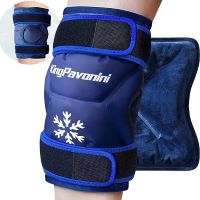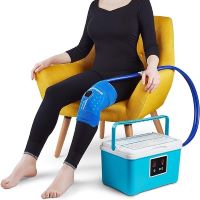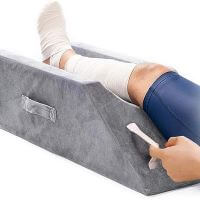Undergoing knee replacement surgery can have a transformative impact on your life by restoring mobility and relieving pain. If you have undergone knee replacement surgery in the past and want to continue pickleball, you might have the following query: “Can I Play Pickleball After Knee Replacement?”.
In this blog, we are going to discuss whether it is safe for you to continue the game after your knee replacement surgery, steps for returning safely to play pickleball post-knee replacement surgery, and steps to avoid while returning to pickleball after knee replacement surgery.

Additionally, we are going to discuss the benefits of playing pickleball after knee replacement surgery and the common challenges that you might face by playing pickleball after knee replacement surgery. So, let’s get started.
You Might Also Like:
Is It Safe for You to Play Pickleball After Knee Replacement Surgery?
When it comes to playing pickleball after knee replacement surgery, the safety and suitability of the activity can vary depending on individual circumstances. It is important to consult with your doctor or orthopedic surgeon, who can provide personalized advice based on your specific situation.
Generally speaking, playing pickleball can be considered safe after knee replacement surgery, as it is a low-impact sport. However, there are a few important factors to consider:
Healing And Recovery
Before making a decision to play pickleball, it is crucial to prioritize the complete healing of your knee after undergoing knee replacement surgery. To ensure a safe return to sports activities, it is crucial to complete the necessary rehabilitation process successfully.
Your doctor will closely monitor your progress and offer guidance on the appropriate timing to resume sports. They will provide valuable assistance and support throughout the process, prioritizing your safety and minimizing the risk of complications.
Strength And Stability
Playing pickleball involves various movements, including lateral movements, quick changes in direction, and rotating. Before returning to these activities, it is important to have regained adequate strength, stability, and range of motion in your knee.
Your doctor or physical therapist can offer you customized exercises and rehabilitation protocols that are specifically designed to assist in your recovery and enable you to resume participating in sports activities safely.
Individual Factors
Your overall health, any pre-existing conditions, and the specific details of your knee replacement surgery can also influence your ability to play pickleball. Your doctor will consider these factors in determining when it is safe for you to engage in sports activities.
It is essential to be aware that pickleball, despite being generally considered a low-impact sport, still places some stress on the knees during gameplay. If you decide to play pickleball after undergoing knee replacement surgery, it is highly recommended to take specific precautions.
These precautions include properly warming up before playing, wearing appropriate footwear, and considering the use of a knee brace or support for added protection. These measures can help safeguard your knee and contribute to a safer and more enjoyable pickleball experience.
Ultimately, it is crucial to seek personalized advice from your healthcare professional. They possess the most accurate knowledge of your medical history, the specifics of your surgery, and your current condition. This enables them to provide the most suitable and safe recommendations tailored to your individual circumstances.
Steps for Safely Returning to Pickleball After Knee Replacement
Returning to pickleball after a knee replacement surgery requires careful planning and consideration to ensure a safe and successful transition. Here are some steps to follow:
Consult With Your Surgeon: Before resuming any physical activity, it is essential to consult with your surgeon or orthopedic specialist. They will evaluate your progress, assess your knee’s stability, and provide specific recommendations tailored to your individual case.
Follow The Rehabilitation Program: Adhere to the prescribed rehabilitation program recommended by your physical therapist or healthcare provider. This program typically includes exercises to improve strength, range of motion, and stability in your knee. Complete the program diligently and avoid rushing the process.
Gradual Progression: Returning to playing pickleball after knee replacement surgery should be approached gradually to give your knee time to adapt and become stronger. Begin by engaging in low-impact activities such as walking, stationary cycling, or light aerobic exercises.
As your knee becomes more comfortable and stronger, slowly increase the intensity and duration of your sessions over time. Eventually, you can incorporate specific knee exercises and strengthening drills into your routine to further support your recovery.
Strengthening Exercises: To enhance the stability and support of your knee joint, participate in exercises that specifically target the muscles around it. These exercises may include quadriceps sets, straight leg raises, hamstring curls, and calf raises. It is essential to collaborate with your physical therapist to ensure that you are using the proper form and technique while performing these exercises. Their guidance will help you to maximize the benefits and minimize the risk of injury.
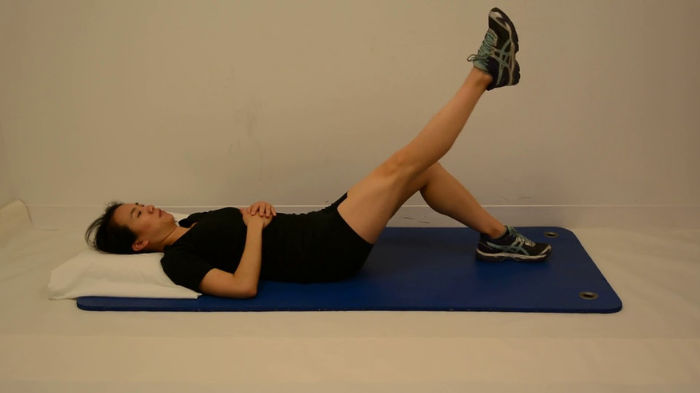
Flexibility And Stretching: Incorporate stretching exercises to enhance flexibility and improve joint mobility. Pay attention to stretching your quadriceps, hamstrings, calves, and hips. Maintaining flexibility can help to prevent muscle imbalances and reduce the risk of injury.
Balance And Proprioception Training: Develop your balance and proprioception skills to enhance your knee’s stability and control during movements. Practice standing on one leg, using a balance board, or performing single-leg squats under the guidance of your physical therapist.
Wear Appropriate Footwear: Invest in proper pickleball or athletic shoes that provide adequate support, cushioning, and stability. It is advisable to select shoes that offer excellent arch support and, if necessary, consider utilizing orthotic inserts for added support.
Modify Gameplay Initially: When you feel that you are ready to return to pickleball, start with modified gameplay. Play in a controlled environment, such as a private court, with a limited number of players. Focus on lighter shots, avoid sudden rotating or twisting movements, and gradually increase the intensity as you gain confidence.
Listen To Your Body: Be attentive to any discomfort, pain, or swelling that arises during or after playing pickleball. If you encounter any problems, adjust your activity level, take a break, or seek advice from your healthcare provider, if required.
Stay Consistent With Exercise And Conditioning: Maintain a regular exercise routine to continue building strength, flexibility, and endurance. Incorporate cardiovascular exercises, strength training, and agility drills to support your overall fitness and pickleball performance.
Remember, these steps are general guidelines, and it is crucial to consult with your healthcare team for personalized advice based on your specific condition and progress. They can provide individualized recommendations and monitor your recovery progress closely.
Benefits of Playing Pickleball After Knee Replacement
Playing pickleball after knee replacement surgery can offer several benefits to individuals regarding physical fitness and overall well-being. Let’s explore each benefit in detail:
Strengthens The Muscles: Playing pickleball incorporates a range of movements, such as lunges, squats, pivots, and paddle swings. These actions activate numerous muscle groups, including the legs, core, and upper body. Regularly engaging in pickleball can gradually strengthen the muscles, resulting in improved stability and overall joint function.
Improves Range Of Motion: The goal of knee replacement surgery is to restore mobility and range of motion in the affected joint. The continuous movement involved in pickleball can gently and gradually improve the range of motion in the knee joint over time. Regularly engaging in pickleball can assist in preserving flexibility, preventing stiffness, and enhancing overall performance in daily activities.
Enhances Cardiovascular Health: Participating in cardiovascular exercises is essential for a healthy heart and overall cardiovascular well-being. Pickleball is a dynamic and fast-paced sport that requires continuous movement, agility, and moments of intensity. This combination of activities elevates the heart rate, improving cardiovascular fitness and strengthening the heart muscle.
Increases Bone Density: Weight-bearing exercises are essential for promoting healthy bones and preventing conditions such as osteoporosis. While pickleball is not a high-impact sport, it still requires weight-bearing movements like running, jumping, and quick changes in direction. These actions exert mild stress on the bones, which can stimulate the production of new bone tissue and increase bone density over time.
Low-Impact Exercise: After undergoing knee replacement surgery, it is important to participate in activities that reduce joint stress while still offering the advantages of exercise. Compared to high-impact sports like running or basketball, pickleball is a relatively low-impact sport.
It is played on a smaller court, which minimizes the strain on the knees. This makes pickleball an excellent option for individuals in recovery from knee surgery, enabling them to remain physically active without subjecting their joints to excessive stress.
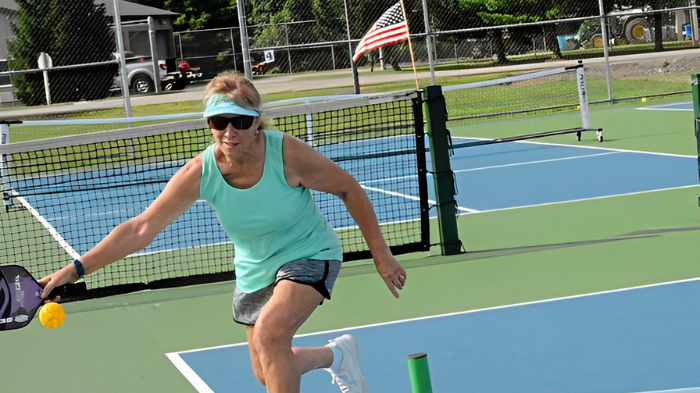
Improved Balance And Coordination: Playing pickleball involves constant movement, quick reflexes, and precise coordination between the eyes, hands, and feet. These actions require good balance and coordination, which can significantly improve with regular play. Enhancing balance and coordination not only benefits pickleball performance but also carries over to daily activities, reducing the risk of falls and enhancing overall mobility.
Weight Management: Maintaining a healthy weight is important for overall joint health, especially for individuals with knee replacements. Pickleball is an excellent form of exercise for weight management because it combines aerobic activity, strength training, and calorie-burning movements. By playing regularly, individuals can burn calories, build lean muscle mass, and contribute to weight loss or maintenance, which can reduce stress on the knees and improve joint function.
Common Challenges for a Pickleball Player Who Is Playing Pickleball Post-knee Replacement Surgery
Playing pickleball after knee replacement surgery can present some unique challenges for a player. While each individual’s experience may vary, here are some common challenges that players may face:
Limited Range Of Motion: After knee replacement surgery, it takes time for the knee to regain its full range of motion. In the beginning, you may feel stiffness or find it challenging to bend your knee, which can impact your ability to move swiftly on the pickleball court.
Decreased Strength And Stability: After undergoing knee replacement surgery, the muscles surrounding the knee may experience weakness or imbalance, resulting in decreased strength and stability. Consequently, this can hinder your ability to execute certain movements effectively, such as lunging or rapidly changing directions on the pickleball court.
Fear Of Reinjury: It is natural to have some apprehension about exerting pressure on the surgically repaired knee. The fear of reinjury can affect your confidence and willingness to move aggressively or perform certain maneuvers on the court.
Impact-Related Discomfort: Pickleball involves frequent movements, including running, jumping, and quick changes in direction. These movements can put stress on the knee joint, leading to discomfort or pain, especially during the early stages of recovery.
Steps to Avoid While Returning to Pickleball After Knee Replacement Surgery
To ensure a successful return to pickleball after knee replacement surgery, it is important to avoid certain actions and behaviors that could jeopardize your recovery or increase the risk of complications. Here are the steps to avoid during the process:
Rushing Your Return: To avoid rushing your return, it is vital to prioritize patience after knee replacement surgery. Resist the temptation to resume playing pickleball too early. Instead, rely on the guidance provided by your surgeon and physical therapist, who will advise you on the appropriate timeline for gradually reintroducing physical activities. By adhering to their recommendations, you can ensure a safer and smoother transition back to pickleball while allowing your body to heal properly.
Ignoring Pain And Discomfort: Pain and discomfort are normal during the early stages of recovery, but persistent or worsening pain should not be ignored. If you experience severe or prolonged pain, swelling, or any unusual symptoms, consult your healthcare provider to address any concerns promptly.
Overexerting Yourself: It is crucial to reintroduce physical activity and avoid overexertion gradually. Pushing yourself excessively or engaging in high-impact movements too soon can strain your knee joint and hinder your recovery. It is recommended to adhere to the guidelines provided by your physical therapist to gradually increase your activity level.
Neglecting Protective Measures: Ensuring the protection of your knee joint is crucial to prevent reinjury or complications. It is advisable to consider employing protective measures, such as wearing a knee brace or support sleeve during your pickleball sessions.
These aids can provide stability and assist in reducing the risk of sudden twists or impacts on the knee. Furthermore, selecting appropriate footwear that offers adequate cushioning and support is essential. This choice can help to absorb shock and minimize stress on your knee joint effectively.
Playing On Unsafe Surfaces: Pay attention to the playing surface and avoid pickleball courts that are in poor condition or have uneven surfaces. Playing on an unsafe or poorly maintained court increases the risk of stumbling, twisting your knee, or experiencing other injuries.
It is advisable to select courts with a smooth, level surface that reduces the chances of accidents. If you come across any hazards or unsafe conditions, make sure to inform the relevant authorities or find an alternative court to play on.
Read: How to become a 5.0 pickleball player? And Sweaty Hands while playing Pickleball
FAQs
The timeline for returning to pickleball varies depending on individual factors, such as the type of surgery, overall health, and progress during rehabilitation. It is crucial to consult with your surgeon and follow their guidance on when it is safe for you to resume playing pickleball.
Whether or not to use a knee brace or support sleeve after knee replacement surgery is a personal decision. Some people may find it helpful for extra stability and support, while others may not need it. To determine if a knee brace is necessary for you, it is important to consult with your healthcare provider and take into account your individual circumstances.
Yes, preparing your body for the game is crucial, and warming up before any physical activity, including pickleball, is an essential part of that preparation. Before starting your pickleball session, engage in light stretches, perform gentle movements, and incorporate low-impact exercises. This warm-up routine helps to prepare your muscles and joints, enhance flexibility, and lower the risk of potential injuries.
Yes, it may be necessary to modify your playing style initially to protect your knee joint. Avoid sudden movements, pivoting, or excessive lunges. Focus on maintaining good posture, using proper technique, and avoiding any actions that could strain or put excessive stress on your knee.
Engaging in pickleball after knee replacement surgery can benefit your recovery. It can help to strengthen the surrounding muscles, improve the range of motion, enhance cardiovascular health, increase bone density, and improve balance and coordination. However, it is crucial to follow proper precautions and guidelines recommended by your healthcare team.
Conclusion
Can I Play Pickleball After Knee Replacement? Playing pickleball after undergoing knee replacement surgery can be a practical and enjoyable form of physical activity, as long as you follow the necessary steps for a safe return to the game. Whether it is safe for you to play pickleball or not post-knee replacement surgery depends on the factors like healing and recovery, strength and stability in your knees, your overall health, and specific details about your knee replacement surgery.
Playing pickleball after knee replacement surgery has some benefits and challenges. While returning to the pickleball court to play pickleball after your knee replacement surgery asphalt pickleball court can be a good option, it is recommended to avoid the steps like rushing your return, ignoring the pain and discomfort you might experience after knee replacement surgery, overexerting yourself, playing pickleball on bad surfaces, etc. After writing this blog, we hope you will follow the steps mentioned in this blog for returning to pickleball after knee replacement surgery and will take the necessary precautions while playing pickleball.

